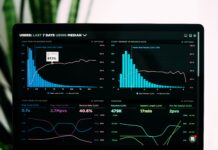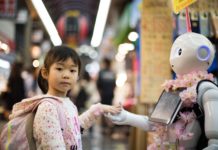The world saw a rise in climate protests as more and more joined the movement to raise awareness about global warming and what we can all do to adapt to a lifestyle that causes the least harm to the environment. Then were the 5Rs popularized.
But what ‘R’ they?
Let’s look at them at their core and what they really mean to start:
- STEP 1: Refuse- Say ‘no’ to any product that involves components that might be an instant waste. Avoid overpackaged and underpackaged goods.
- STEP 2: Reduce- Yes, since a lot of the commodities we use can`t be avoided, try and decrease the amount you consume. Make an effort and reduce your carbon footprint.
- STEP 3: Reuse- For example, do you have a skirt you’ve outgrown? This will allow you to save a penny on clothes while helping out the environment massively! Learn to stitch, if you do not already know enough. Invest your time on ensuring reusability as much as you can and feel free to show off your as good as new clothing!
- STEP 4: Repurpose- Take a moment and use your intellect, be creative. Find ways you can re-employ that teddy bear that you no longer use(maybe use the cotton to stuff a pillow)? Or maybe you find your plant a home in your old, worn-out shoes!
- STEP 5: Recycle- Many kinds of glass, paper, cardboard, metal, tires, etc. are all recyclable. Do some research and find the right way to recycle the material at hand.
So, now what?
That was idealism- we generally forget or lack the proper methods to our disposal to get the 5Rs right. So, why not get the machines to do it? If we look carefully, all of the 5Rs require insight, and we also heard about the development of what sounds like a modern breakthrough- yes, I`m talking about Artificial Intelligence.
The application of AI in environmental protection includes machine learning for protecting oceans, monitoring shipping, ocean welfare and agriculture, too.
Here’s a list of more environmental solutions through AI, concerning the 5Rs.
Refuse through AI
It starts with you telling your machine what you don’t want to buy. Tell the system which ingredients you prefer not to have, and shall agree to consume only in the absence of better alternatives. You`ll need to give some time for the robot to predict accurately, but the results will be worth the while.
Reduce through AI
AI can recommend your local farmer and manufacturer- and there we have a win-win situation. You get fresh supplies, support your local producers and also help to reduce the amount of packaging that would go as an instant waste otherwise; and also lessen the fuel it took to reach you. You can also ask AI to remind you to carpool, recommend a second-hand product, or even learn how to save food waste!
Reuse through AI
Be creative, be conscious. Tell AI to guide you through solutions to reuse your garbage. While it dictates, you joyfully follow and cherish the feeling of doing your part for the ecosystem. There are many different ways AI can show compassion and integrate into human life.
Repurpose through AI
Same as Re-usage of waste, here are more ways to do so. Like we stated, speaking to your bots is very interesting as well as heartening. Here is a more in-depth guide to learn how chatbots work.
Recycle through AI
Only a small fraction of the over 2.1 billion tons of the garbage the world produces each year gets recycled- about 16%. Robots are able to learn the features of materials. Robots can learn the features of materials, find if the material is cloudy or opaque, wet or dry and identify the logos of certain brands, also recording the data on their packaging and while machine learning makes them more waste-wise, they provide data on which policies to adopt next for a better future. The impact on AI in daily life is definitely not negligible.
Time for some examples of the 5Rs that are already in use:
- AI could help to forecast electricity demand and generation, allowing suppliers to devise the perfect allocation of renewable resources into national grids and reduce waste.
- AI helps reduce the number of wasted journeys, shift freight to low- carbon alternatives whenever necessary and better help carpooling.
- SamurAI identifies objects on a conveyer belt and segregates them faster than a human can.
- Trashbot by CleanRobotics identifies the type of item thrown into it, weighs it, drains any liquids and places it in the right bin out of recyclable, biodegradable or none of these.
Let’s now take a short quiz on what you just read. The first 3 people to correctly answer it in the reply box below will get a chance to be our guest writers!
Q1) You have a can of juice, which bin do you put it in?
Q2) What do you call the process when Artificial intelligence systems automatically improve from experience?
Looking forward to your responses! DM US on Instagram at ai4ai_net



















